
Welcome To Black Hole Central.com!
This is an independent informational site covering black holes and related pictures and materials. Items presented here are rather unique and in-depth, but in laymen's language. Technical jargon is kept to a minimum.
Black Hole Basics
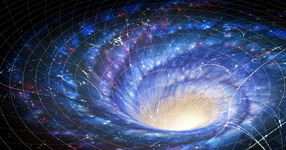
Black Holes are explained in simple terms. There are two kinds of Black Holes - those that come from dying stars and those that are at the center of most galaxies. The gravitational force of a black hole is extremely strong because its matter is concentrated at its central core. The intense gravitational field of a black hole prevents everything, including light, from escaping.
Black Holes In Depth
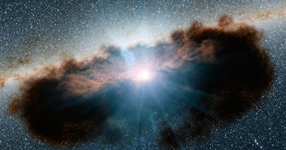
A singularity at the center of a Black Hole indicates that gravity and density approaches infinity. It illustrates places where General Relativity Theory breaks down and one can not know the details of what is happening. Around the edge of a super-massive black hole there is a huge ring of very dusty gas called a "Torus" (shown above). The Torus is very dense and lumpy.
Black Hole Active Galaxies
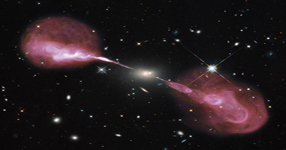
An active galaxy is a galaxy that has a very small core of extremely high powered emissions forming massive jets emanating from the center of the galaxy. Active galaxies have an Active Galactic Nucleus (AGN). The core is extremely bright and may be highly variable. It is believed that almost all galaxies have super-massive black holes at their centers.
Sister Web Sites
Black Hole Quasars
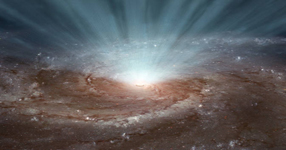
Active Galactic Nucleus (AGN) galaxies all have a powerful energy source much bigger than what ordinary stars produce coming from the center of their galaxies. These quasars are now recognized as super massive black holes at the center of emerging galaxies. Quasars are believed to be powered by the accretion disc around their centralized black hole.
EHT Project
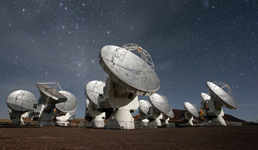
The Event Horizon Telescope (EHT) will initially be composed of eight radio observatories based all around the world with the objective of observing the black hole at the center of the Milky Way up close. Many radio antennae separated by thousands of miles can be operated in concert to create a “virtual” telescope almost the size of the planet.